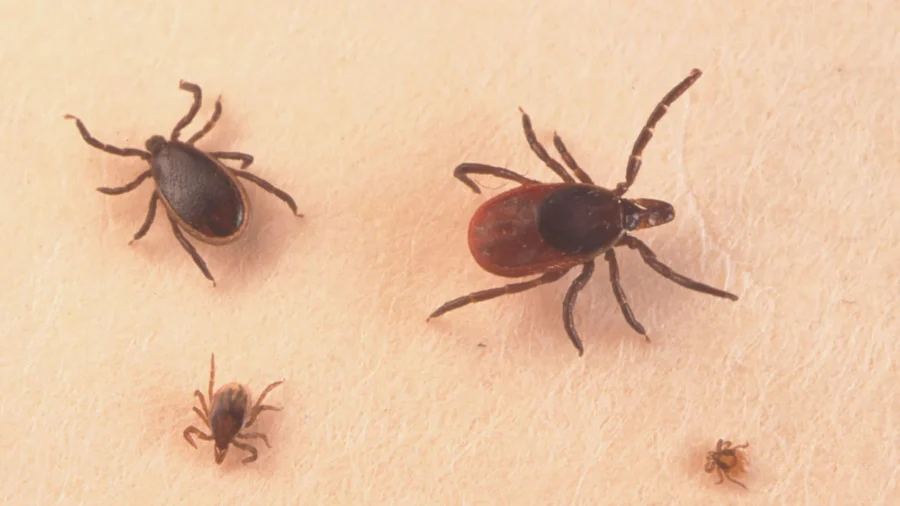A tick-borne disease, sometimes called “American malaria,” has significantly risen in the United States over the last decade, according to a new study that also found co-infections have become common.
Researchers at Penn State Health Milton S. Hershey Medical Center and Penn State College of Medicine found that cases of babesiosis rose by an average of 9 percent annually between 2015 and 2022, according to a study published in Open Forum Infectious Diseases on Oct. 8.
The parasitic disease is caused by the Babesia parasite and is transmitted through bites from black-legged ticks. According to the researchers, it primarily affects Northeastern and Midwestern states. Like Malaria, it infects red blood cells and sometimes causes flu-like symptoms.
Co-Infections
The study also discovered that 42 percent of people with babesiosis were co-infected with at least one other tick-borne disease, most commonly Lyme disease.
“These findings suggest that clinicians should have a heightened vigilance of co-infection of other tick-borne illness among patients admitted with babesiosis,” said Dr. Paddy Ssentongo, an infectious disease fellow at Penn State Health Milton S. Hershey Medical Center in an Oct. 8 press release.
He said ticks often carry other bacteria, which can result in infections, such as Lyme disease, or other tick-borne diseases, such as anaplasmosis and ehrlichiosis.
The study analyzed data from 3,521 babesiosis patients using the TriNetX database, which contains clinical information from over 250 million individuals. Researchers found that cases peaked during summer and were most prevalent in Northeastern states.
According to Ssentongo, changing factors like humidity, temperature, and length of rainy season could be one reason behind increasing tick infections. He said population increases for animals that serve as hosts, such as deer, could also contribute.
The study found that patients with babesiosis alone had a higher mortality risk than those co-infected with other tick-borne diseases. Ssentongo said this could be due to differences in treatment approaches or potential immune system effects of co-infection.
“It’s speculated that the concurrent presence of other tick-borne infections in the blood could alter the immune response by possibly ‘boosting’ it to effectively fight infections,” he said.
The research team noted that patients with multiple tick-borne infections were more likely to receive doxycycline, an antibiotic commonly used to treat Lyme disease and other tick-borne illnesses. According to Ssentongo, this finding raises questions about the potential effectiveness of doxycycline in treating babesiosis.
Current treatment for babesiosis typically involves a combination of azithromycin and atovaquone antibiotics, with severe cases sometimes requiring red blood cell exchange therapy.
To prevent tick-borne diseases, Ssentongo advised residents in areas with ticks to take precautions, especially during the summer months. He recommended wearing long-sleeved shirts, pants, light-colored clothing, using tick repellent, and checking for ticks after outdoor activities.
The study will be presented at IDWeek, the Infectious Disease Society of America’s annual conference, which will be held in Los Angeles from Oct. 16 to 19.

